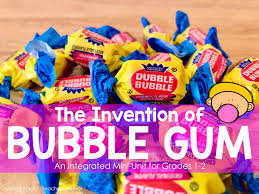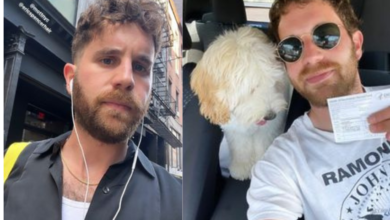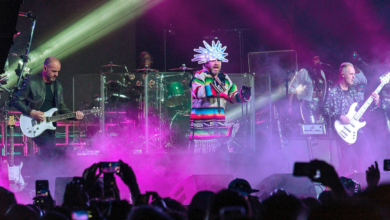Bubblegum, a chewy delight that has been part of pop culture for generations, has a fascinating and playful history. Its evolution is not just about the gum itself, but also about the rise of bubblegum blowing as a popular activity. Whether it’s the joy of popping a bubble or the satisfaction of watching one grow, bubblegum blowing has become a fun pastime for millions of people worldwide. In this article, we’ll take you through the history of bubblegum and the journey of bubblegum blowing.
The Beginnings of Bubblegum
The roots of bubblegum trace back to ancient times. While chewing gum, in general, has been around for centuries, bubblegum itself began to take shape in the late 19th century. Early forms of chewing gum were made from natural substances such as tree sap, specifically sapodilla trees in Central America, which provided a gum-like substance called chicle. The Aztecs and Mayans chewed this natural gum for medicinal purposes, as well as for enjoyment.
However, it wasn’t until the 1860s that the concept of chewing gum as a recreational treat began to gain popularity in the United States. The first chewing gums on the market were hard and not suitable for bubble blowing. In fact, the very idea of creating a gum that could form bubbles didn’t occur until later in the evolution of gum-making.
The Invention of Bubblegum

The credit for inventing the first bubblegum goes to an American inventor named Walter Diemer. Diemer worked for the Fleer Chewing Gum Company, and in 1928, he accidentally created the first successful bubblegum recipe while experimenting with gum formulas. He used a combination of rubber, corn syrup, and sugar to produce a gum that was more elastic and pliable, making it ideal for blowing bubbles.
Diemer’s creation was initially named “Dubble Bubble,” and it quickly became a hit. Unlike previous types of chewing gum, Dubble Bubble allowed users to blow large, popping bubbles. This marked the birth of bubblegum as we know it today.
Bubblegum Blowing Becomes a Trend
As bubblegum grew in popularity, so did the trend of bubblegum blowing. By the 1930s, kids and adults alike were gathering in parks, schools, and playgrounds to show off their bubble-blowing skills. The fun of seeing who could blow the biggest bubble created a sense of community, especially among younger generations.
The 1940s saw the rise of mass marketing for bubblegum. Brands like Bazooka, initially introduced in the late 1940s, became staples in the chewing gum industry. Bazooka gum, famous for its comic strips, was marketed as a fun, exciting gum with a playful image that appealed to children. This helped solidify bubblegum blowing as a key aspect of popular culture.
Bubblegum Blowing in Pop Culture
As the years went on, bubblegum began to take on a larger cultural significance. In the 1950s and 1960s, the trend of bubblegum blowing was often depicted in movies, television shows, and advertisements. The act of blowing bubbles was associated with youth, freedom, and fun, and it was frequently used as a symbol of rebellion in popular culture.
For example, in the 1950s, rock-and-roll stars like Elvis Presley and Buddy Holly were often seen chewing bubblegum in public, reinforcing the image of bubblegum as a symbol of youthful exuberance. The image of a teenager blowing a bubble became iconic in the 1960s, especially with the rise of television shows that featured young protagonists.
The 1970s: The Era of Bubblegum Music
The 1970s was a pivotal decade in the history of bubblegum and its influence on pop culture. The music genre “bubblegum pop” emerged, with catchy tunes and fun lyrics aimed at younger audiences. Bands like the Archies, with their hit song “Sugar, Sugar,” contributed to the playful, carefree attitude of the time. This music genre perfectly mirrored the spirit of bubblegum blowing, as both represented fun, lightheartedness, and youthful energy.
The 1970s also saw the introduction of new, colorful bubblegum varieties. Brands began offering bubblegum in a variety of flavors and colors, adding to the excitement and appeal of blowing bubbles.
Bubblegum Blowing as a Competitive Sport
In the 1980s, bubblegum blowing reached a new level of popularity with the advent of competitive bubble-blowing contests. The Guinness Book of World Records began documenting record-breaking bubble sizes, and by the late 1980s, competitive bubble-blowing had become a fun and serious activity for enthusiasts.
In these contests, participants would compete to blow the largest bubble in terms of diameter or volume. The competitive nature of bubblegum blowing led to the development of strategies and techniques that could help people achieve larger bubbles. Some competitors would use specific types of gum, while others practiced different blowing techniques to increase their odds of success.
Modern-Day Bubblegum Blowing
Today, bubblegum is still an essential part of our daily lives. While the act of blowing bubbles may not have the same cultural significance it once did, it remains a fun, nostalgic pastime for people of all ages. Social media has brought bubblegum blowing back into the spotlight, with viral videos of people blowing gigantic bubbles becoming sensations. In addition, bubblegum blowing is still a common activity at events like carnivals and fairs, where bubble-blowing contests are often featured.
The modern bubblegum industry has also evolved, with new products designed specifically for blowing bigger bubbles. Manufacturers now use advanced techniques to create gum that is both chewy and elastic, providing the perfect consistency for bubble-blowing enthusiasts. While the classic flavors like bubblegum and watermelon remain popular, new flavors continue to emerge, keeping the experience fresh and exciting.
Conclusion
The evolution of bubblegum blowing has come a long way since its origins in ancient civilizations. From Walter Diemer’s accident that led to the creation of Dubble Bubble to the competitive bubble-blowing contests of today, bubblegum has remained a fun and integral part of many cultures around the world. Whether it’s a simple, casual pop in the park or a serious competition, bubblegum blowing continues to bring joy to millions of people worldwide.
FAQs about Bubblegum Blowing
- Who invented bubblegum?
- Walter Diemer, an employee of Fleer Chewing Gum Company, is credited with inventing the first successful bubblegum in 1928.
- What made bubblegum different from regular chewing gum?
- Bubblegum is made from a special combination of ingredients like rubber and corn syrup, which make it more elastic and stretchable, allowing users to blow bubbles.
- Why do some people blow bigger bubbles than others?
- Several factors influence the size of a bubble, including the type of gum used, the technique of the blower, and the moisture of the gum. Some people also have more practice in blowing larger bubbles.
- Are there any world records for bubblegum blowing?
- Yes, there are numerous records for bubble size, with the largest bubble ever blown recorded at over 20 inches in diameter!
- Is bubblegum blowing considered a competitive sport?
- Yes, bubblegum blowing has become a competitive sport in some places, with events like bubble-blowing contests where participants compete to blow the largest bubble.
You May Also Read: https://ventsweekly.news/daily-trust-ng/


